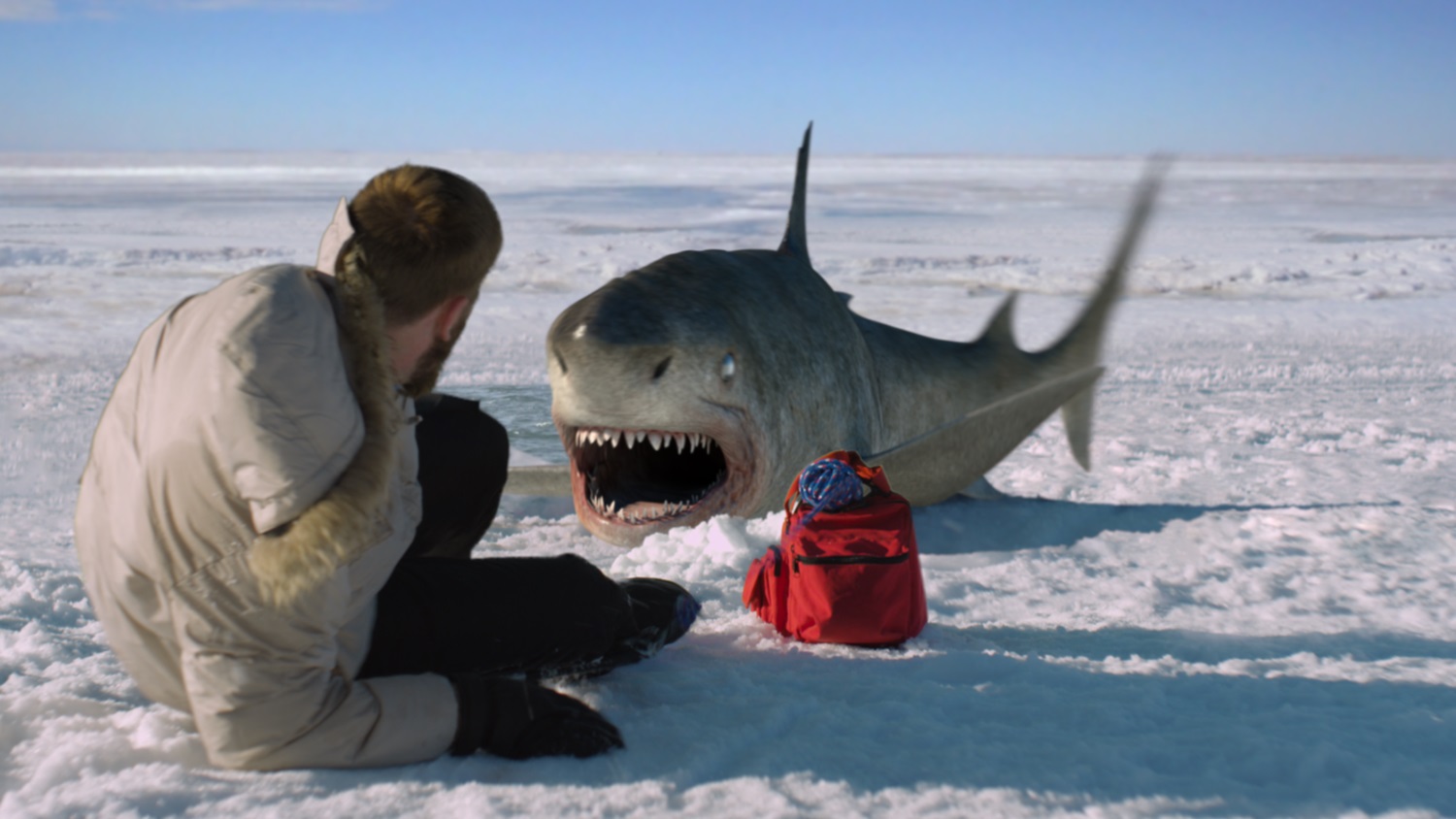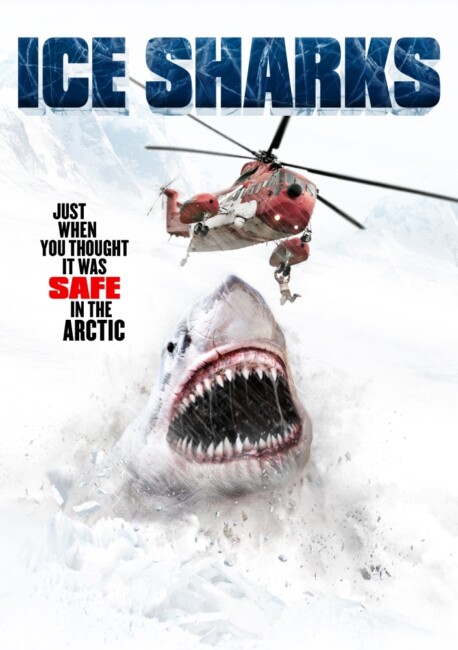USA. 2016.
Crew
Director/Screenplay/Visual Effects Supervisor – Emile Edwin Smith, Producer – David Michael Latt, Photography – Darrin A. Webb, Music – Isaac Sprintis, Production Design – Vincent Albo. Production Company – The Asylum.
Cast
Edward Deruiter (David), Jenna Parker (Tracy), Kaiwi Lyman-Mersereau (Michael), Clarissa Thibeaux (Alex), Travis Lincoln Cox (Sammy), Mia Danelle (Val), Shamar Philippe (Eddie), Leddie Garcia (Suluk), Jim Helton (Captain Coffey)
Plot
A crewmember at the Oasis polar base goes out to check on a faulty sensor only to be attacked by a shark that bursts up through the icepack. The others realise that they are dealing with prehistoric sharks that have been revived by warm air currents under the ice shelf. The sharks now circle and attack the base. They succeed in separating the station from the landmass, leaving it floating on a sheet of ice, and then cause it to topple into the water. Trapped inside the base as it sinks, the crew desperately try to find a means of being rescued before the one day’s worth of air they have left runs out and the sharks break in.
The low-budget production company The Asylum, best known for their mockbusters, weren’t the ones to create the gonzo killer shark film but were the ones to popularise it. This came about with Mega Shark vs Giant Octopus (2009) and in particular with their bad movie cult hit Sharknado (2013). They have multiply sequelised both of these films, as well as made other shark films such as 2-Headed Shark Attack (2012), Shark Week (2012), 3-Headed Shark Attack (2015), Planet of the Sharks (2016), Empire of the Sharks (2017), 5 Headed Shark Attack (2017), 6-Headed Shark Attack (2018), Megalodon (2018), Shark Season (2020) and Shark Side of the Moon (2022), as well as host of other tongue-in-cheek fishy films such as Mega Piranha (2010), 2010: Moby Dick (2010), Mega Python vs. Gatoroid (2011) and Blood Lake: Attack of the Killer Lampreys (2014).
Outside of The Asylum’s efforts, the gonzo killer shark film has taken on a life of its own as witness titles such as Dinoshark (2010), Sharktopus (2010), Shark Night 3D (2011), Snow Shark: Ancient Snow Beast (2011), Swamp Shark (2011), Jersey Shore Shark Attack (2012), Jurassic Shark (2012), Sand Sharks (2012), Avalanche Sharks (2013), 90210 Shark Attack (2014), Raiders of the Lost Shark (2015), Roboshark (2015), Zombie Shark (2015), Piranha Sharks (2016), Sharkansas Women’s Prison Massacre (2016), Sharkenstein (2016), House Shark (2017), Trailer Park Shark (2017), Post Apocalyptic Commando Shark (2018), Ouija Shark (2020), Sky Sharks (2020), Noah’s Shark (2021), Sharks of the Corn (2021), Virus Shark (2021) and Shark Side of the Moon (2022), among others. (For a more detailed listing see Killer Shark Movies).
The surprise about Ice Sharks, which on the face of it is sold like just another gonzo killer shark film, is that it actually plays itself seriously, something that must have taken considerable restraint in the post-Sharknado era. The usual cheap effects of The Asylum’s films are not too bad – there are one or two slightly dodgy ones but these are kept brief, while most of the others look perfectly reasonable. The film even manages to shoot some underwater sequences during the efforts of the divers to repair the habitat as sharks circle behind them, which look reasonably convincing.

Emile Edwin Smith creates moderate tension during the scenes where the sharks separate the base and cause it to sink to the ocean floor and then the various dramas as the survivors attempt to alert the rescue ship. It is a low-budget film but the drama is solid and tense. With a better budget, these are scenes that could have approached something of the underwater scenes in The Abyss (1989).
There are one or two absurdities – one of these is the lack of geographical knowledge that frequently turns up in Emile Edwin Smith’s films. One of the maps of where the base is supposedly located shows Ross Island, which is part of the Antarctic continental mass, while the other shows the Northwestern Territories and Nunavut, which are located in the Canadian north – in other words, near The Arctic and at entirely the opposite end of the Earth than the Antarctic.
Emile Edwin Smith has previously worked in visual effects since the 1990s and as a visual effects supervisor on numerous films for The Asylum. Smith went on to direct several other films for The Asylum with Age of Ice (2014), Mega Shark vs Mecha Shark (2014) and Flight World War II (2015).
Trailer here


